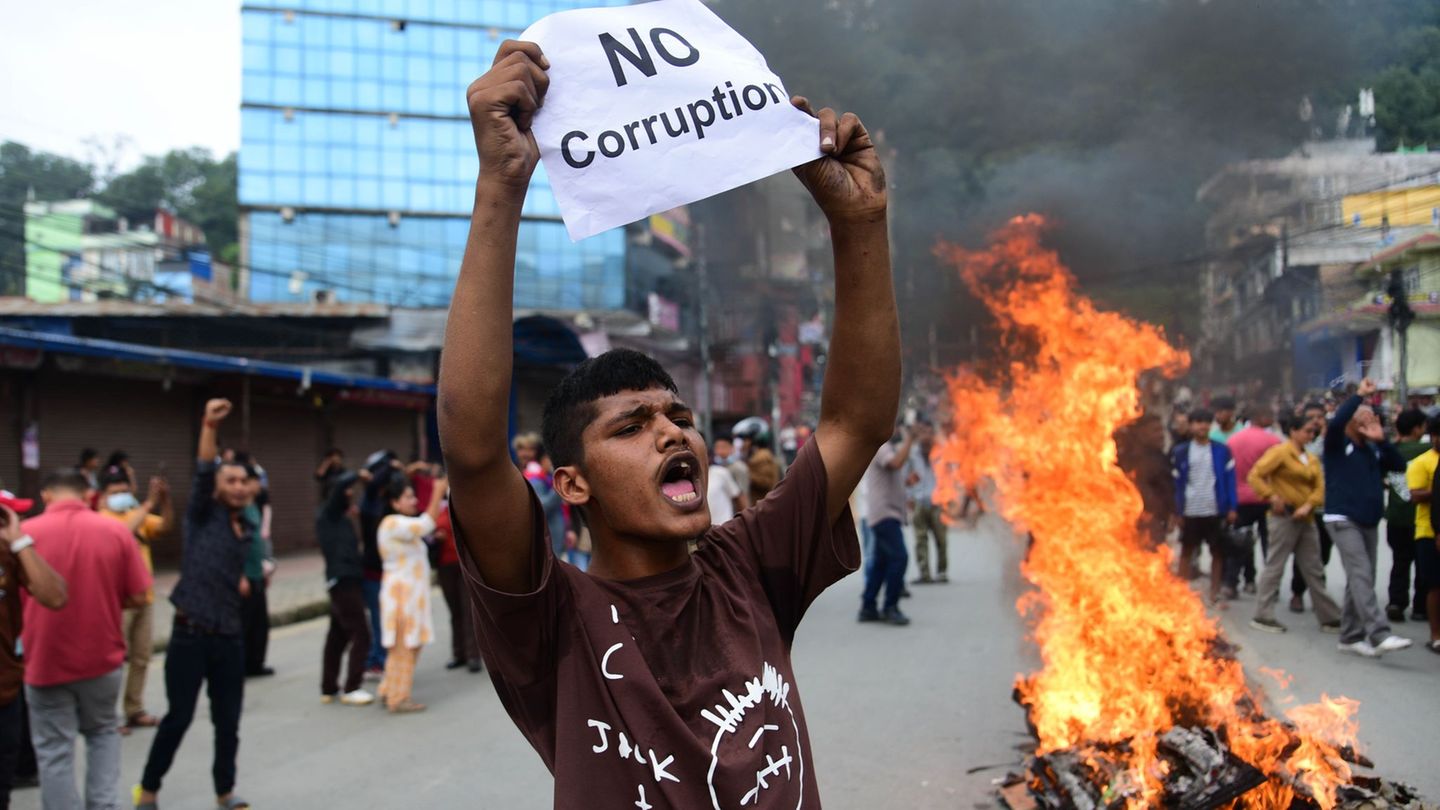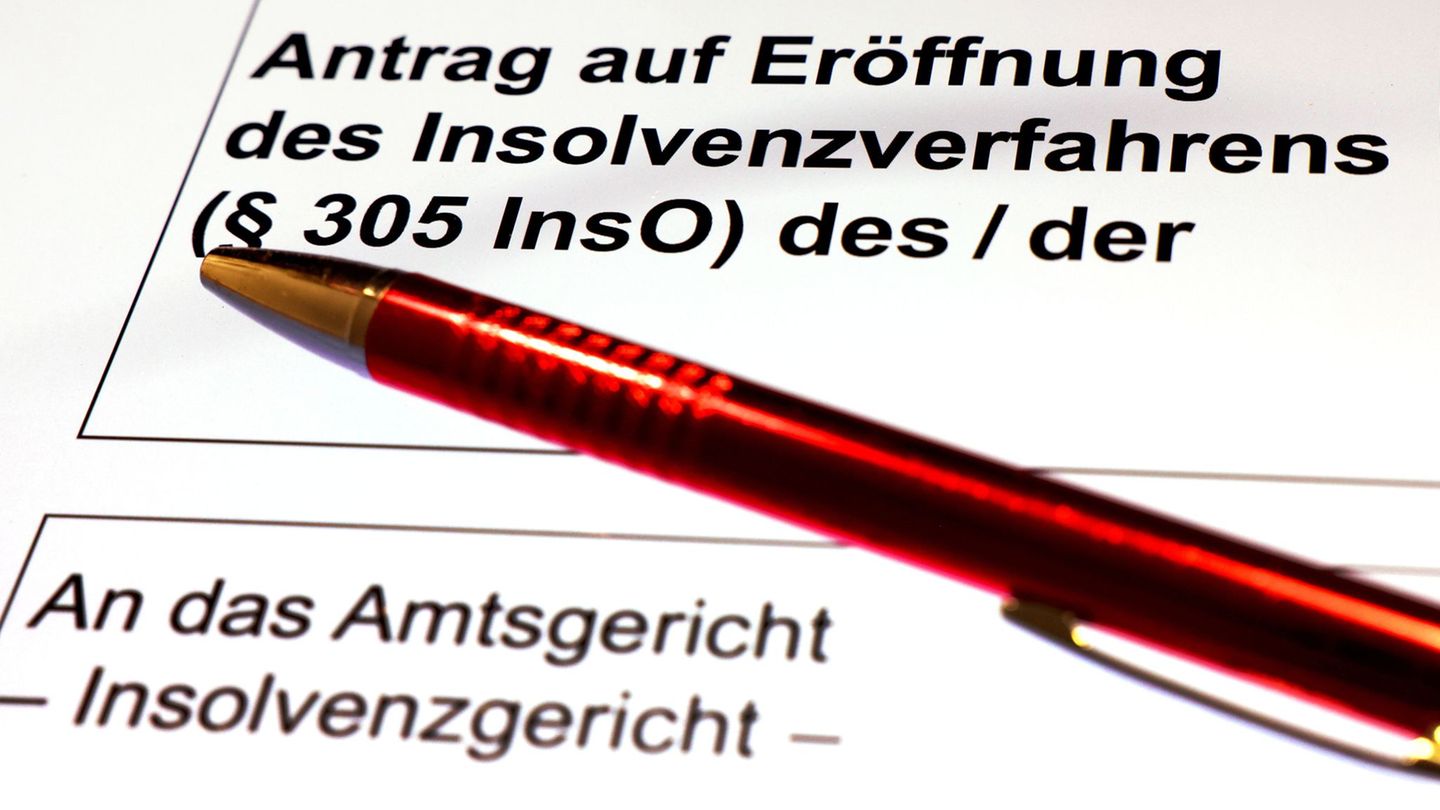After a dispute over social media ban
Output lock, 19 dead, resignation of the Prime Minister: Nepal before the collapse
Copy the current link
Add to the memorial list
A ban on social media triggers serious unrest in Nepal. The protests continue. Houses of top politicians are lit – and it continues to escalate.
Despite the abolition of a controversial ban for social media platforms such as Facebook, YouTube, X and Instagram in Nepal, the second day in a row occurred. In the capital Kathmandu and other parts of the country, angry people set fire to the residence and offices of several ministers and other politicians on fire and attacked stones, reported the newspaper “The Kathmandu Post” and other local media. Prime Minister Khadga Prasad Sharma Oli resigned because of the serious unrest in the country.
According to reports, the aim of the attacks was also private houses Olis. Unverted videos also showed how flames climbed at the house of President Ram Chandra Paudel. There were initially no reports on injured. Police positions were also lit. The attacks in Kathmandu occurred in several districts despite a curfew.
Dead and injured in demonstrations
Hundreds of people from cities near the Indian-Nepalese Border to a protest march on Kathmandu on the way to support the demonstrators, as one of the protesters informed the Reuters news agency. Kathmandu Airport, Nepal The most important connection abroad was closed. The aviation authority said that the smoke of nearby fire, which had been laid by demonstrators, could endanger security.
The protests had ignited in Nepal after the government of the Himalayan state had banned 26 online networks last week. As a result, she wanted to force the services to register and have it under state supervision. However, the step had caused strong criticism and drove thousands, mostly younger people across the country.
On Monday there were at least 19 deaths in clashes between demonstrators and police in Kathmandu and elsewhere. Numerous people were injured. According to the reports of Nepalese media, the police had used water cannons, tear gas and sharp ammunition.
Separation of Nepal’s online networks is not the only reason
The protests were not only against the blocking of online networks that the government has now lifted. The participants also denounce widespread corruption in the state and nepotism.
The organizers of the protests, which have also extended to other cities, refer to them as “demonstrations of Generation Z”. They are driven by the widespread disappointment of young people who accuse the government of inactivity in combating corruption and promoting economic opportunities. “We still stand here for our future … We want this country to be corruption -free so that everyone can easily access education, hospitals, medical facilities … and have a brilliant future,” said a demonstrator to Reuters TV.
In a message from the Prime Minister’s office, it was said that with his resignation, Oli wanted to clear the way for a political solution to the current situation in the country. Previously, several ministers, including the interior minister, had resigned. The 73-year-old Oli had been in the office of head of government since last year, which he had held several times.
The most serious unrest for decades
The neighbor India – hundreds of thousands live there Nepalese Migrant workers – said that everyone involved will serve restraint and solve problems through conversations. In a joint statement, the messages of Australia, Finland, France, Japan, South Korea, Great Britain, Norway, Germany and the USA demanded all parties in Nepal on practicing the greatest possible reluctance, avoiding further escalation and protecting fundamental rights.
Nepal has around 30 million inhabitants. It has been the most serious unrest in the poor Himalayan state for decades. His parliamentary democracy is young. From 1996 to 2006 there was civil war, the centuries -old monarchy was abolished in 2008.
KM with news agencies dpa, AFP and Reuters
Source: Stern
I have been working in the news industry for over 6 years, first as a reporter and now as an editor. I have covered politics extensively, and my work has appeared in major newspapers and online news outlets around the world. In addition to my writing, I also contribute regularly to 24 Hours World.




